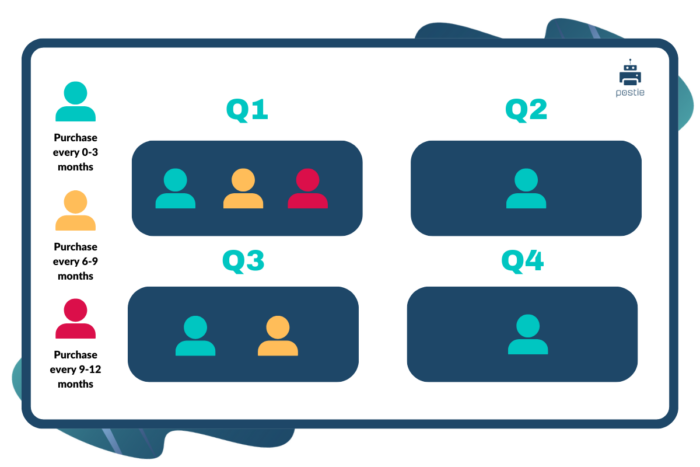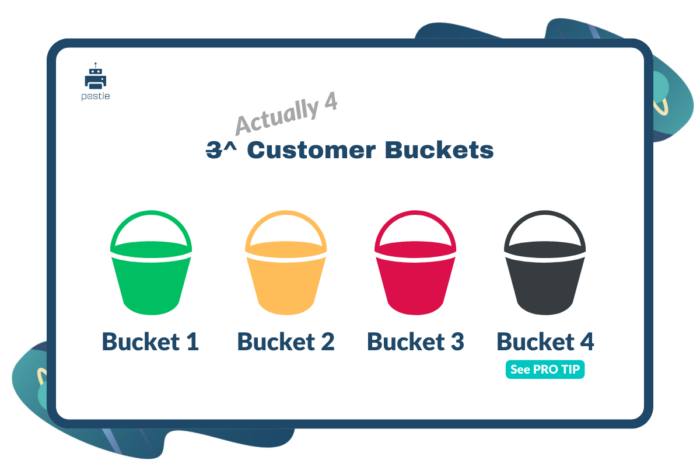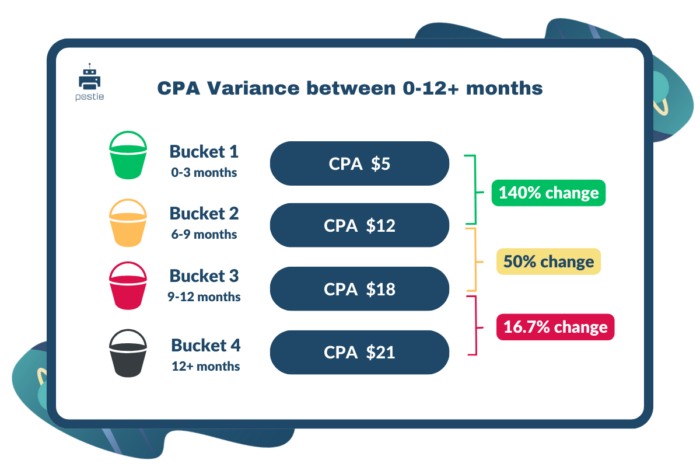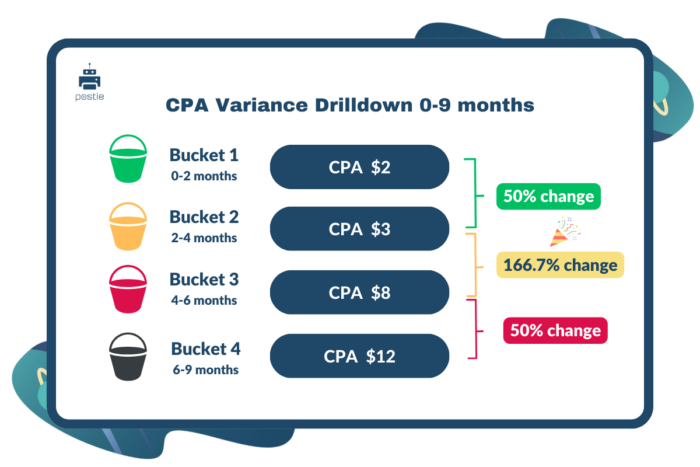Last month we broke down how to determine your minimum suppression window — if you missed it, check out how to crack the secrets of sending frequency.
It helped answer the first question of our sending frequency series, When is it too soon to re-mail our audience?
Now we’re going to focus on the other book-end of sending frequency, When is it too late to send to your audience?
Let’s get into it.
The Key Benefits of This Exercise Are:
- 💰 Know precisely how much it costs to re-acquire lapsed customers at different buying intervals
- 🔎 Zero in on the timeframe where you can make the most impactful optimizations
- ⏰ Understand the opportunity cost of sending later vs sooner
Step 1: Bucketing Your Audience
To begin we will focus on one critical piece of information (🙏 hopefully) living in your CRM — your customer’s last purchase date.
Your higher LTV customers might purchase quarterly (a smaller interval), and on the other end of the spectrum, less frequent buyers may purchase as little as once a year (a greater interval).

If you group your customers into buckets based on when they made their last purchase, you can begin to send strategic campaigns to those audiences and measure the CPA associated with re-acquiring those customers.
Make sense, b-e-a-utiful. 😍
Here is how to go about defining your buckets to test. 👇
Ask yourself these two questions:
- How much time is there between purchases for my best customers?
- What is the average time between purchases?
After you have answered these questions you will have three buckets to put your customers into:

- 🟩 Bucket 1 – Time between purchases for your best customers (we usually see every 0-3 months)
- 🟨 Bucket 2 – The average time between purchases (commonly 6-9 months)
- 🟥 Bucket 3 – Anyone beyond that (i.e. 9-12 months)
🚨 PRO TIP: It’s also important to define when a customer is considered churned.
Group all your churned customers into their own bucket and test that group as well.
Since you’re a savvy marketer it shouldn’t come as a shock the more time that passes between purchases, the more it costs to re-acquire lapsed customers.
But we can’t rely on intuition; we need some real conversation data to build a comparison analysis against your other intervals.
Step 2: Send to Your Buckets and Analyze
There is only one really good way to get the CPAs associated with your different buckets — you gotta send to them — no ifs, ands, or buts about it.
So go do that!
Once you send to each group, and you have some performance metrics to show for it, look for the greatest change in CPA.
For example: 👇

✅ Once you identify the most significant change, this is the area of greatest opportunity for optimization.
In the above example, the difference in CPA between 0-3 months and 6-9 months is the biggest and is the obvious area for optimization.

Step 3: Rinse and Repeat
🔎 Run a second, more refined test between those two groups with more granularity. This time, segment 0-3 and 3-9 into smaller groups: 0-2 months, 2-4 months, 4-6 months, 6-9 months as an example.
What you’re trying to do is narrow down EXACTLY where that CPA jump takes place.

Here you can see we’re starting to zero in on the months where the greatest cost jump takes place (between 2-6 months) and arguably the longest you want to wait to re-send your audience.
In Conclusion
And just like that, we have our two book ends. 📕
In last week’s blog post, we found our first boundary by analyzing conversion rate decline to determine the minimum amount of time to wait before resending to your audience.
Now we’re using CPA to determine the opposite boundary; the maximum amount of time to wait without shouldering unnecessary costs to influence additional purchases.
Now that you have your two bumpers to send within, if you proceed to send to your audience not too soon, and not too late, but juuust right, you can drive conversions without a performance decrease while also minimizing the costs you incur to drive those additional purchases.
🤌 (chef’s kiss)
